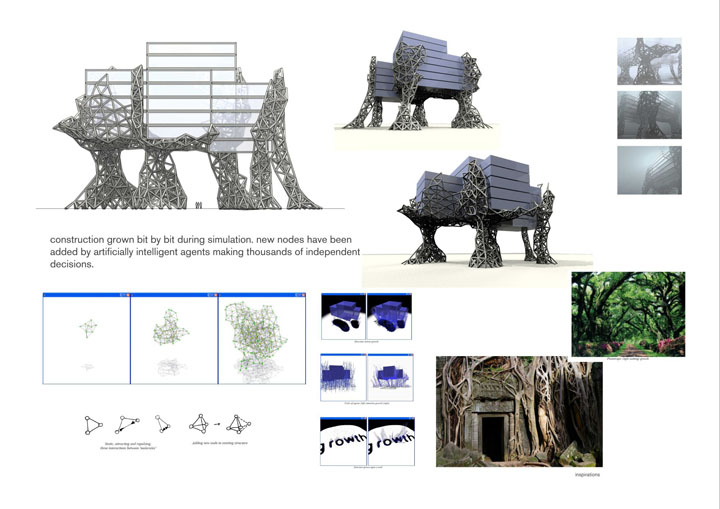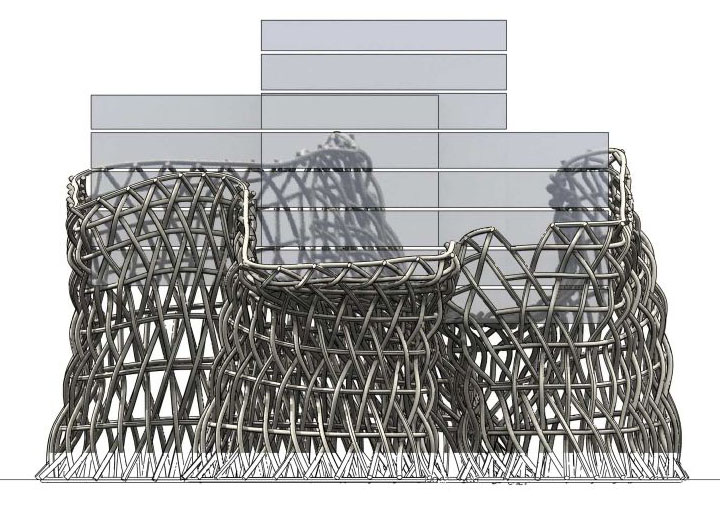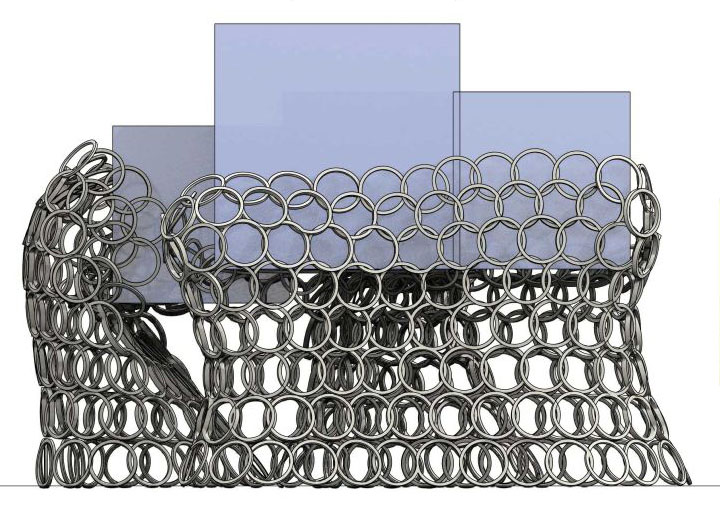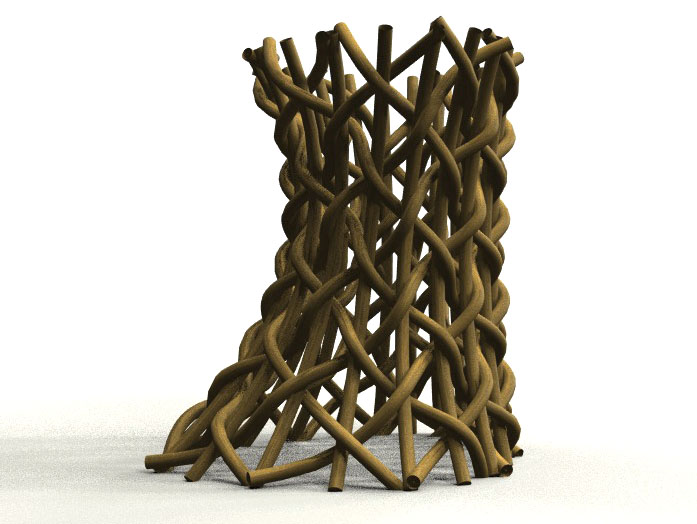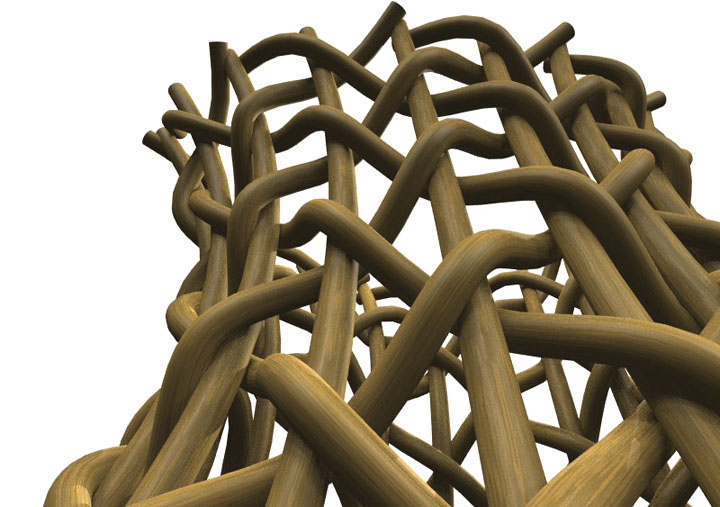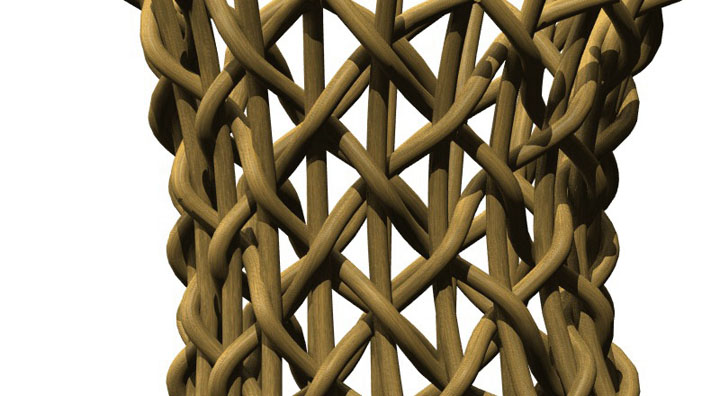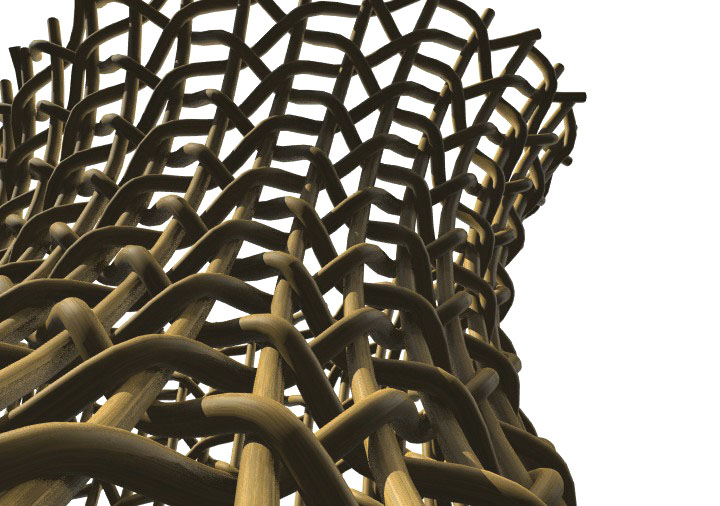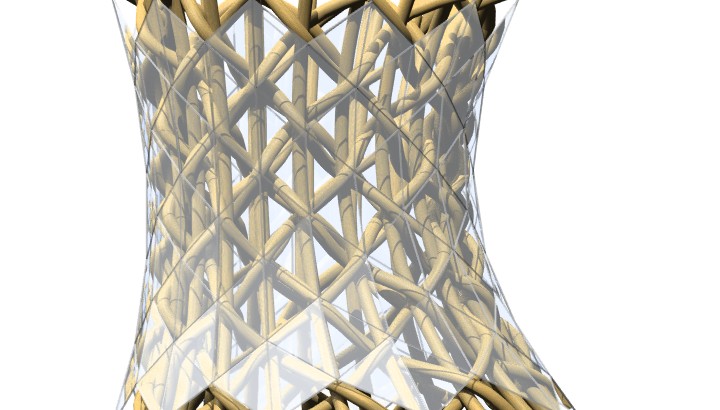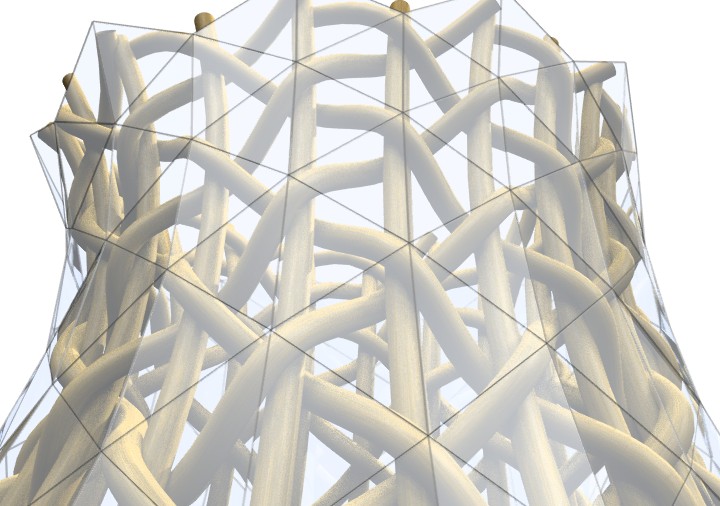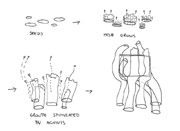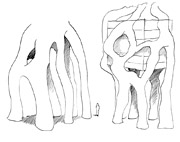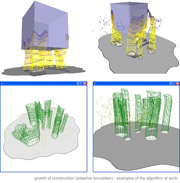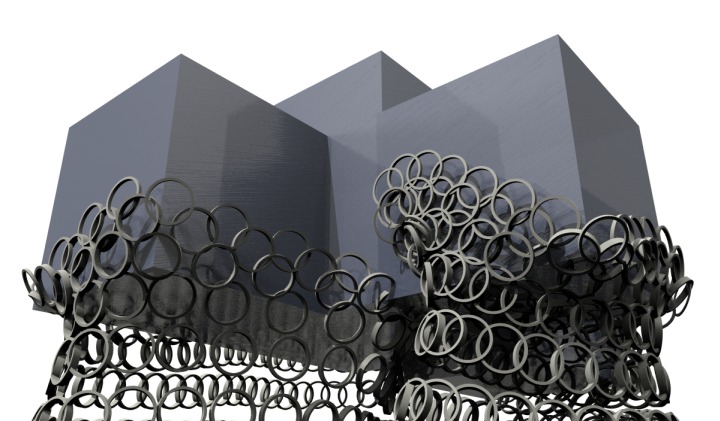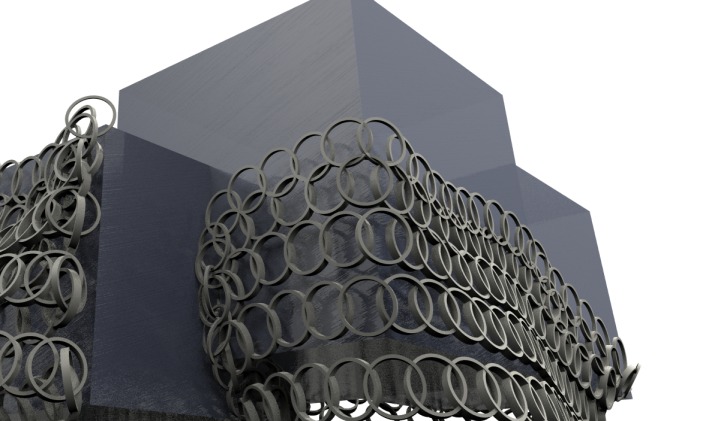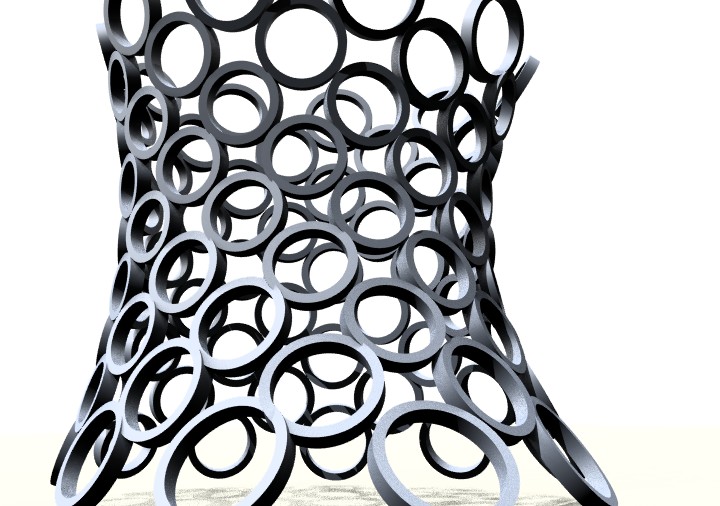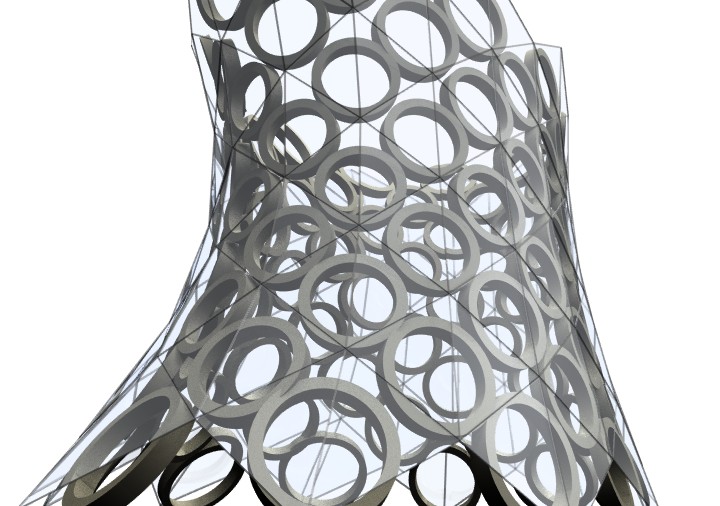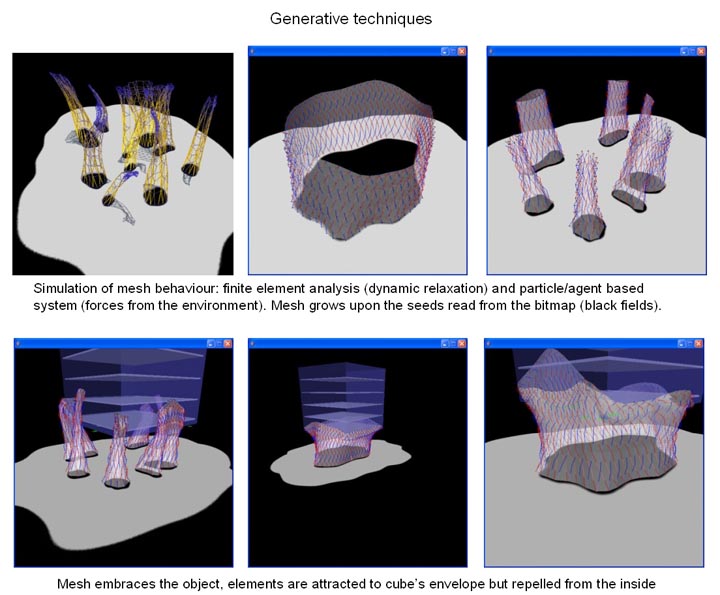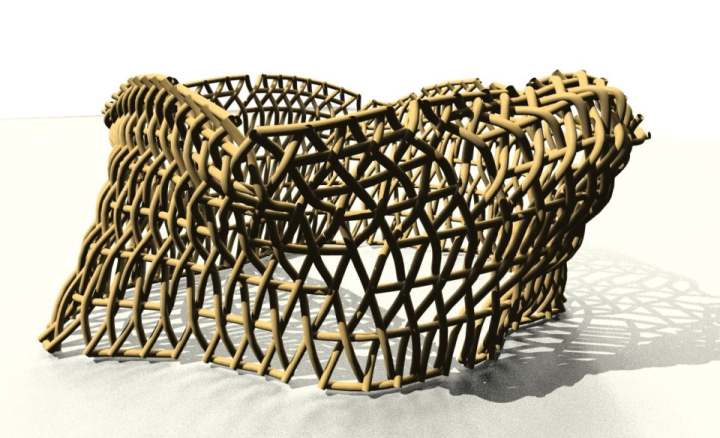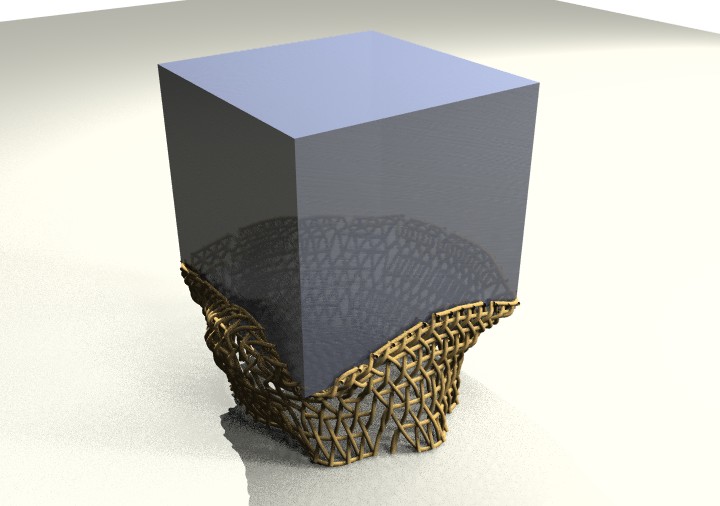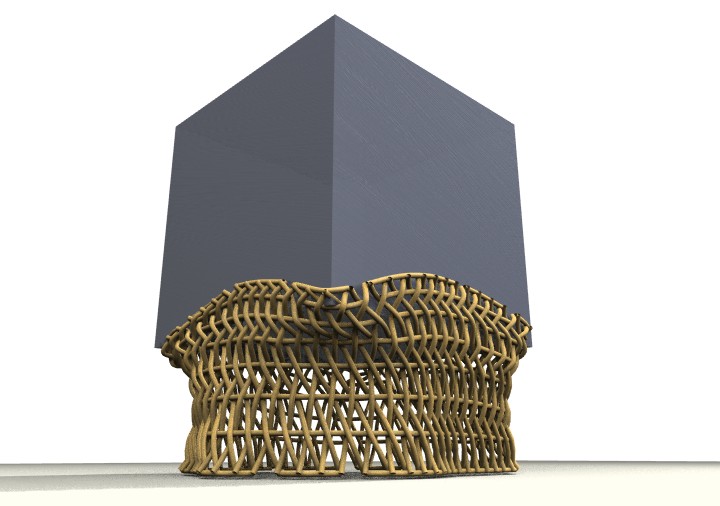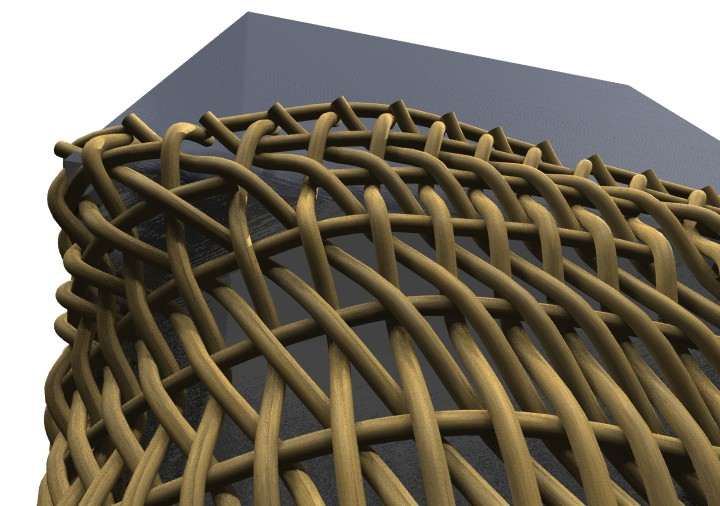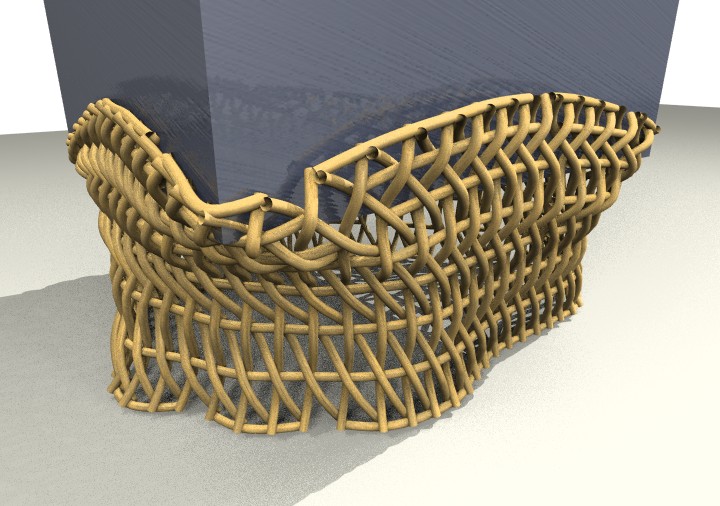
[EN] In this section I’d like to present results of my recent researches in domain of constructions that are ‘breed’ with use of artificial intelligence. Shown constructions have been created by programs simulating ‘virtual playground’, in which all real
world properties have been recreated (gravity and other external world circumstances influencing general shape of the construction). It mainly regards creating ‘phototropic’ growth, which develops object in direction of light source and opposite to this of gravitational force. Additionally few other rules have been implemented, for example constructions automatically
entwine already existing elements of virtual world (boxes), and constantly optimize themselves ; in cases where material and connections are placed disproportionally, nodes are moved to where more material is needed to transfer forces. Nodes keep nearly equal distances between, which makes construction consist of (almost) regular tetrahedrons. Usually after few
minutes of simulation ‘breed’ object may be exported to modeling program, then rendered or 3d printed.
[PL] W tej sekcji chciałbym zaprezentować rezultaty moich ostatnich poszukiwań w dziedzinie konstrukcji ‘hodowanych’ niejako przez użycie algorytmów sztucznej inteligencji. Przedstawione konstrukcje zostały stworzone przez programy
symulacyjne tworzšce ‘wirtualny wiat’ w którym odtworzone zostały warunki podobne do tych naturalnych (grawitacja i zewnętrzne oddziaływania wpływajšce na kształt konstrukcji). Głównie chodzi tutaj o stworzenie wzrostu ‘fototropicznego’, czyli takiego, który rozwija obiekt w kierunku wiatła i przeciwnym do grawitacji. Dodatkowo obowišzuje tutaj kilka innych reguł, na przykład konstrukcje automatycznie ‘oplatajš’ istniejšce elementy wirtualnego wiata (kostki), oraz same optymizujš siebie – tzn. w przypadkach nieefektywnego rozmieszczenia węzłów, przenoszš je tam gdzie potrzeba więcej materiału do transferu sił. Węzły zachowujš zbliżone odległoci od siebie, co powoduje, że konstrukcja składa się głównie z czworocianów zbliżonych do foremnych. Zazwyczaj po kilku minutach symulacji wyhodowany obiekt można wyeksportować do programu modelujšcego i wyrenderować bšd wydrukować w trzech wymiarach.
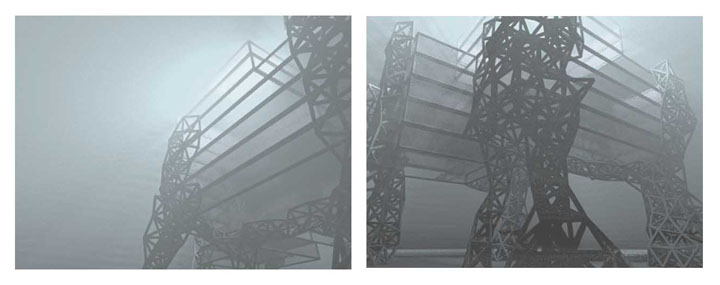
above: screenshots from
animation, which can be downloaded here
[13megs], pdf file with entire dissertation project may be downloaded from here
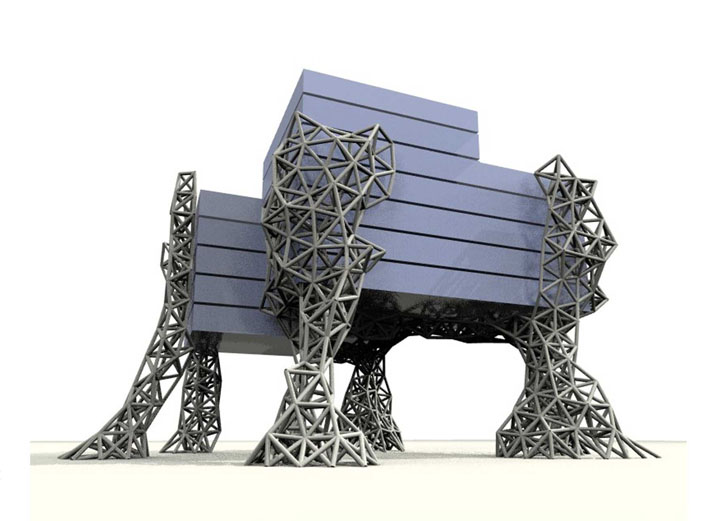
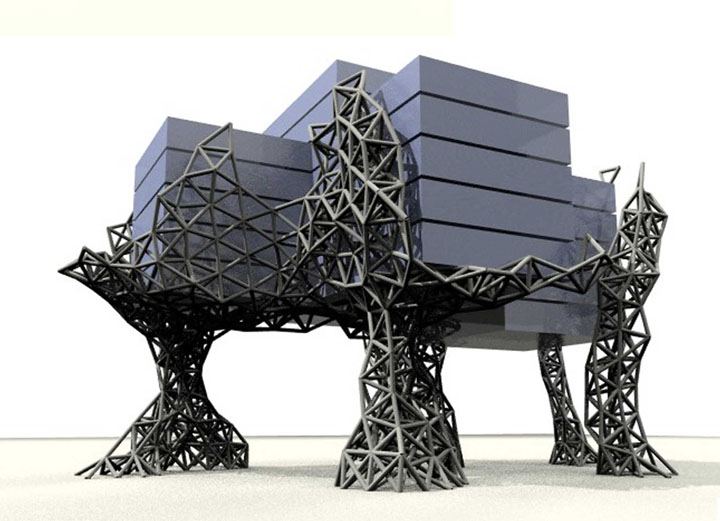
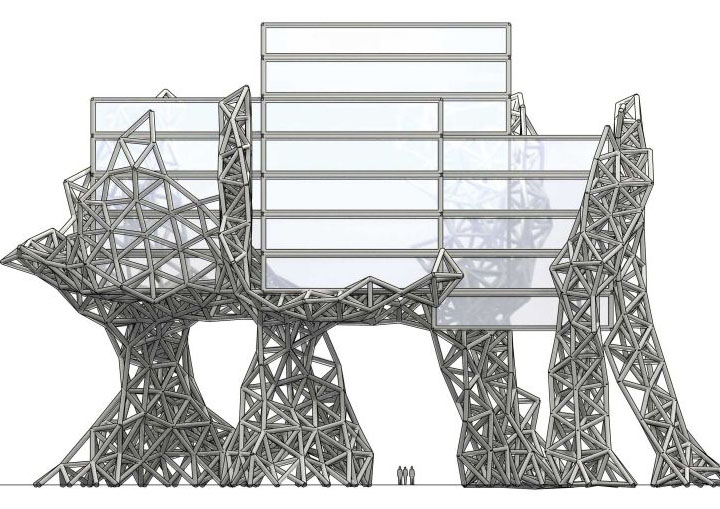
page above explains some
intricacies of how object was grown, click to download 2000×1415 sheet
……………………………………
